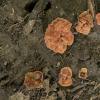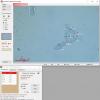
12-01-2026 05:24
 Danny Newman
Danny Newman
Cyathicula coronata on Urtica dioicaCataloochee Di

15-12-2025 11:49
 Danny Newman
Danny Newman
ITS sequences from the following two collections B

11-01-2026 20:35
Hello.A very tiny pyrenomycete sprouting sparsely

09-01-2026 17:41
Arnold BüschlenHallo, F. dilatata wird von vielen Bryoparasiten

10-01-2026 20:00
Tom SchrierHi all,We found picnidia on Protoparmeliopsis mur

07-01-2026 22:22
 Danny Newman
Danny Newman
Tatraea sp. on indet. hardwood The Swag, Great Sm

10-01-2026 01:18
 Danny Newman
Danny Newman
cf. Neovaginatispora fuckelii on indet. shrub Pre

07-01-2026 10:24
 Danny Newman
Danny Newman
Pezicula sp. on indet. hardwood Appalachian Highl

09-01-2026 10:08
 Blasco Rafael
Blasco Rafael
Hola, en el mismo habitat que la anteriorRetamaDia

08-01-2026 21:22
 Blasco Rafael
Blasco Rafael
Hola, He recogido esta muestra de Orbilia sobre Re
Orange disks
Leif Goodwin,
14-10-2023 11:29
Someone suggested a Purpureodiscus species e.g. P. isabellinus.
Help appreciated.
Nicolas VAN VOOREN,
22-10-2023 11:19

Re : Orange disks
Macroscopically it looks like Purpureodiscus subisabellinus, but you should show some mature ascospores (in water). They measure 18.5-23.5 × 11-13 µm and show bipolar spore granules. The amyloid reaction of asci is only visible on the wall (W type), sometimes difficult to see.
Leif Goodwin,
13-11-2023 18:43
Re : Orange disks
Thank you for taking the time to reply, and apologies for my late response. I have given the specimen to someone who will amplify the ITS region of the DNA and then have it sequenced. When he returns it, I will try and find some mature spores. Hopefully the DNA sequencing will give us an answer, but sadly DNA does not always amplify, possibly because the primers are not ideal for ascos.


